Do you have some 1975 pennies that you are thinking of selling? Do you wonder how much money you can get for them?
Then you’ll be glad you came here; this post is dedicated to people like you. In it, we are going to discuss the 1975 penny value, its features, history, varieties, and errors.
1975 Penny Details
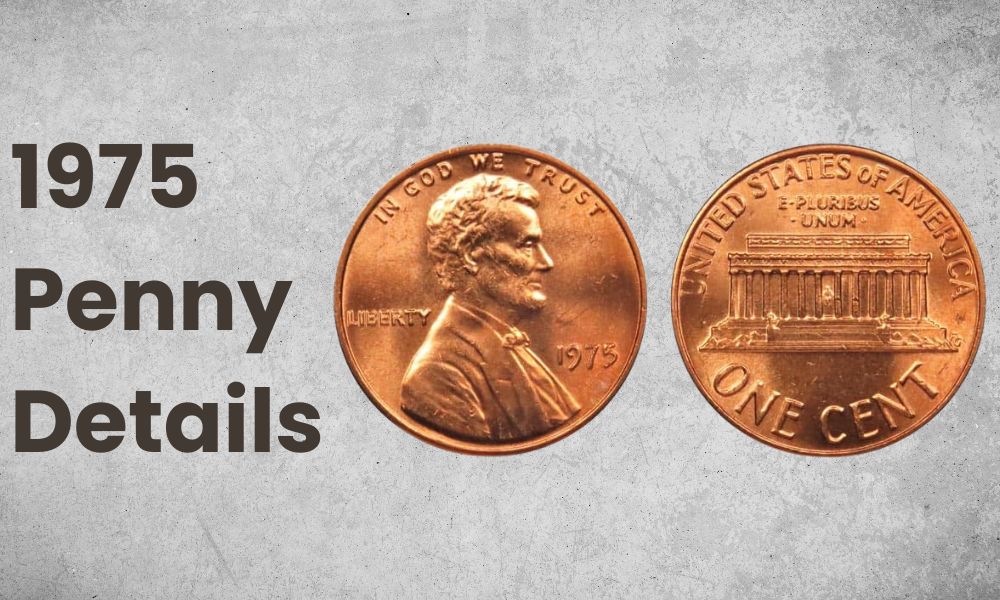
- Type: Lincoln Cents (Lincoln Memorial Reverse)
- Total Mintage: 9,959,596,890
- Minting place: Philadelphia, West Point, San Francisco, and Denver
- Observe designer: Victor D. Brenner
- Reverse designer: Frank Gasparro
- Composition: 95% copper and 5% zinc
- Edge: Plain
- Diameter: 19 mm
- Weight: 3.11 g
- Face value: $0.01 (1 cent)
The 1975 Penny’s Obverse
This coin’s obverse features a right-facing image of Abraham Lincoln’s bust. This is located at the center of the coin and runs to its bottom rim.
Along the top rim, just above Lincoln’s head, the words “IN GOD WE TRUST” run from behind the back of his head to in front of his forehead. There are also horizontal inscriptions of “LIBERTY” and “1975” behind his head and in front of his chest respectively.
The 1975 Penny’s Reverse
This penny’s reverse has one main feature; the centrally-placed image of the Lincoln Memorial. There are two legends written around the rim of this design. These are “UNITED STATES OF AMERICA” at the top and “ONE CENT” at the bottom.
There’s also an inscription that says “ E PLURIBUS UNUM” just under the top legend, on top of the Lincoln memorial. There’s a dot between each word in the motto and one at the end of it.
The 1975 Penny’s Other Features
Design aside, the 1975 penny has several other interesting physical features. For one it has a round shape with a plain edge and a 19 mm diameter. Also, it has 95% copper and 5% zinc; this gives it a mass of 3.11 grams.
Also Read: Top 20 Most Valuable Old Pennies Worth Money (Penny Collection)
Value Chart
| 1975 Penny Value Chart | |||
| Grading | 1975 No Mint Mark Penny | 1975 “D” Penny | 1975 “S” Penny |
| XF45 | $0.03 | $0.03 | N/A |
| AU55 | $0.03 | $0.03 | N/A |
| MS65 | $16 | $16 | N/A |
| MS68 | $10,500 | $10,000 | N/A |
| PR63 | N/A | N/A | $4 |
| PR67 | N/A | N/A | $8 |
| PR70 | N/A | N/A | $15,000 |
1975 Penny Value and Varieties Guide
1975 No Mint Mark Penny Value
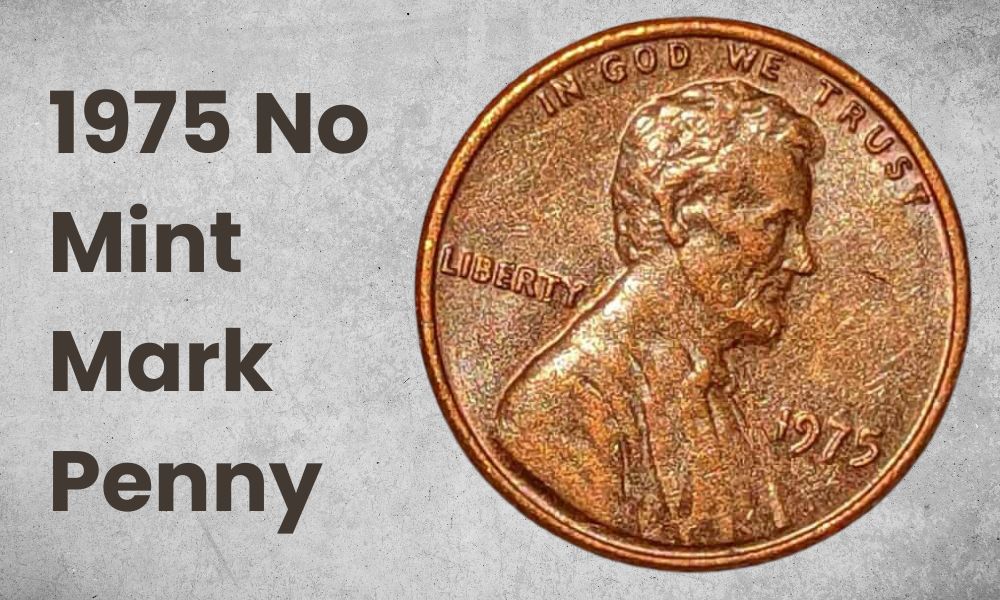
- Type: Lincoln Cents
- Mint Mark: None
- Minting place: Philadelphia and West Point
- Year: 1975
- Mintage: 5,451,476,142
- Obverse Designer: Victor D. Brenner
- Reverse Designer: Frank Gasparro
- Face value: $0.01
- Current value: $0.03 to $10,500
- %Composition: 5% zinc and 95% copper
- Mass: 3.11 g
- Edge: Plain
- Diameter: 19 mm
In 1975, 5,451,476,142 no-mint pennies were produced. While around 3.8 million of them were minted at the Philadelphia mint, the rest were minted at the West Point one. All these were regular-strike coins.
Also, 66 of the coins minted in Philadelphia had an aluminum pattern. However, none of these were released to the public. But you can still find 1975 no-mint pennies today at low prices; this is because of their high mintage.
A low to average-grade one usually goes for 2 to 3 cents; the value of the copper it contains. These are mostly red and red-brown coins. But if you find a red mint-state coin, you can usually sell it for $3 to $10,500.
1975 “D” Penny Value
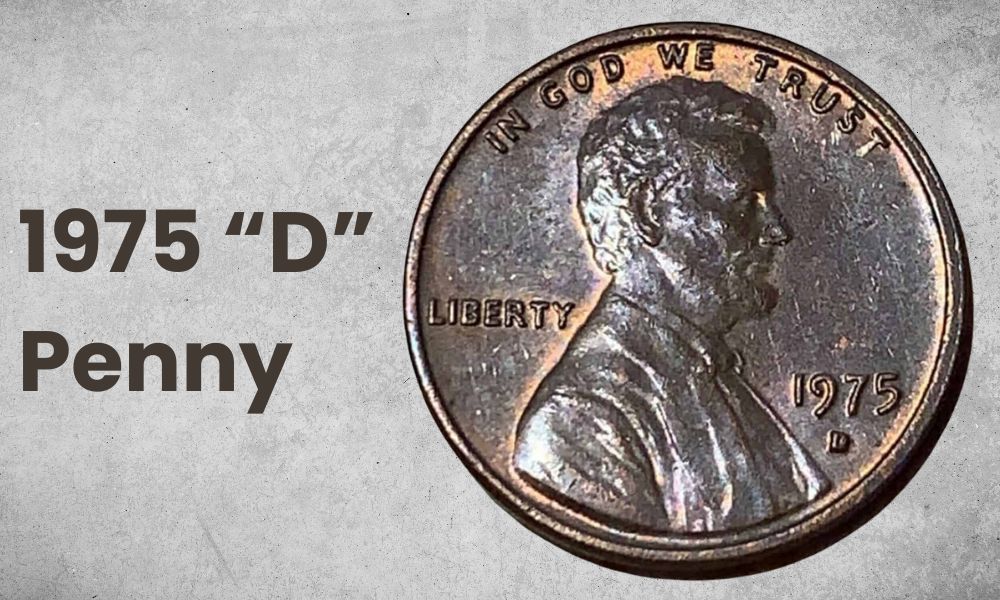
- Type: Lincoln Cents
- Mint Mark: “D”
- Minting place: Denver
- Year: 1975
- Mintage: 4,505,275,300
- Obverse Designer: Victor D. Brenner
- Reverse Designer: Frank Gasparro
- Face value: $0.01
- Current value: $0.03 to $10,000
- %Composition: 5% zinc and 95% copper
- Mass: 3.11 g
- Edge: Plain
- Diameter: 19 mm
In 1975, the Denver mint produced 4,505,275,300 pennies. Each was a regular strike coin with a “D” mint mark. This is located on the coin’s obverse under the date inscription.
Since these coins were produced in high numbers, they are readily available and affordable. An average grade will usually go for the price of its copper content; 2 to 3 cents. A mint-state sample can go for $6 to $10,000 depending on grade and color.
1975 “S” Penny Value
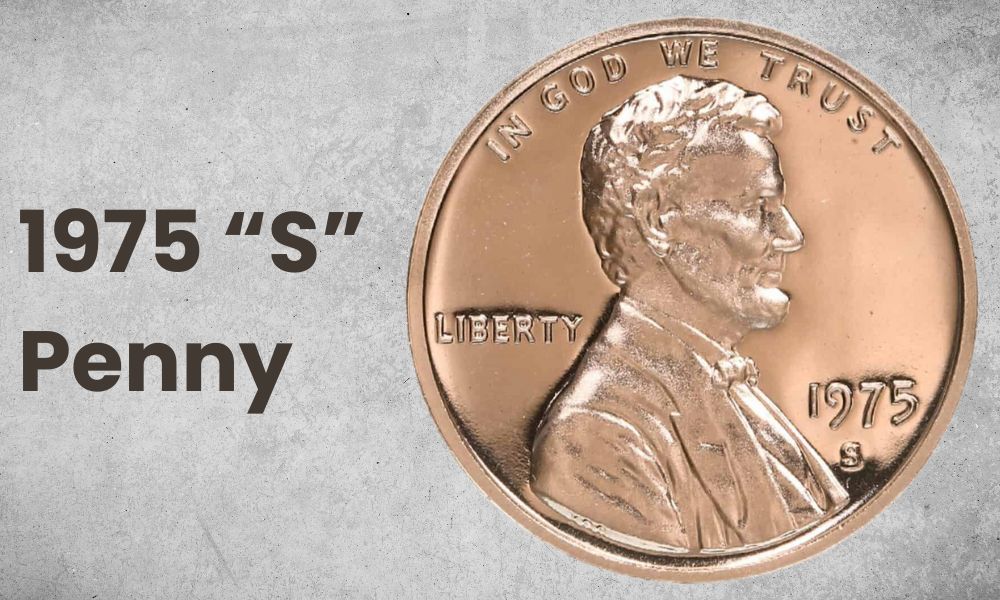
- Type: Lincoln Cents
- Mint Mark: “S”
- Minting place: San Francisco
- Year: 1975
- Mintage: 2,845,450
- Obverse Designer: Victor D. Brenner
- Reverse Designer: Frank Gasparro
- Face value: $0.01
- Current value: $4 to $15,000
- %Composition: 5% zinc and 95% copper
- Mass: 3.11 g
- Edge: Plain
- Diameter: 19 mm
In 1975, the San Francisco mint produced 2,845,450 pennies. All of these were proofs and each had an “S” mint mark under its date inscription. But because of their high mintage, these coins are still cheap despite their pristine condition.
A PR63 can cost a mere $4. You need to have a red PR70 to make thousands. Even a PR69 will only go for around $50.
1975 Penny History
The Lincoln Cent was launched in 1909 to replace the Indian Head Cent. As its name suggests, the latter features an Indian head on its obverse. The original design of the Lincoln Cent was done by Victor D. Brenner.
For the 1909 cent, he placed an image of Abraham Lincoln on the obverse and two wheat stalks on the reverse. The obverse that he created has mostly remained the same while the reverse has changed drastically severally.
This has given rise to several miniseries of Lincoln cents. For example, the Lincoln cents produced from 1909 to 1958 are commonly known as wheat pennies because of the stalks of wheat on their reverse design.
On the other hand, the cents produced from 1959 to 2008 are commonly referred to as Lincoln memorial cents because of the Lincoln memorial’s image on their reverse. This design was made by Frank Gasparro.
He submitted it to participate in a competition to redesign the cent’s reverse; the competition was only open to mint engravers. Interestingly, he made the design without having gone to the Lincoln memorial even once and was notified of his winning in 1958.
In December of the same year, the president’s press secretary announced that the mint would start minting the new design in January 1959 to honor the 150th anniversary of Lincoln’s birth.
This design continued to be minted year after year until 2008. But in 2009, the Lincoln Bicentennial cents were minted. These featured four different reverse designs based on Lincoln’s life.
One depicted his professional life, another his presidency, another his formative years, and another his early years. These designs were replaced in 2010 by a design featuring a shield; this is still used to date.
Keep in mind though; the Lincoln cent used today doesn’t have the same composition as the original one. The modern cent is 97.5% zinc and 2.5% copper while the original has 95% copper and 5% zinc.
The current composition was instituted in 1982 and has been used every year since. This isn’t the only time the Lincoln cent’s composition was changed though; the 1943 cent had a composition of 95% steel and 5% zinc.
1975 Penny Grading
If you suspect that your 1975 penny is valuable, you can submit it to a professional agency for grading. This will ensure you sell it at the right price. Just keep in mind that you’ll need to pay for this service and it can’t be done on contaminated coins.
List of 1975 Penny Errors
1. 1975 Penny Obverse Struck Through a Capped Die
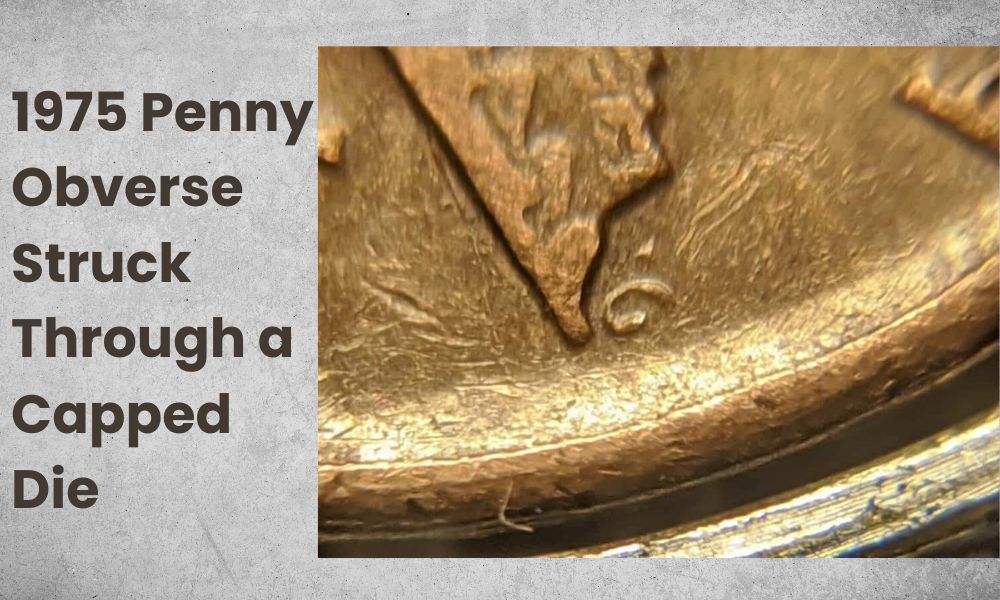
A die cap is a coin that gets stuck on the hammer die and spreads around it with every strike until it looks like a bottle cap. At this point, any design that was on the cap has faded away.
So when it strikes a coin, it leaves a faint image that has seeped through it from the hammer die. The new coin with this faded image is referred to as being struck through a capped die. An MS62 1975 D penny with this error on its obverse can sell for around $50.
On the other hand, a red-brown MS65 1975 D penny with an obverse die cap can sell for $360.
2. 1975 Penny Die Break
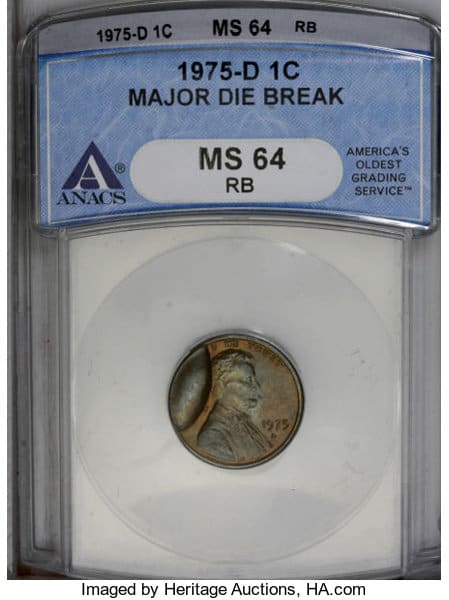
As its name suggests, this error happens when a piece of the die breaks and falls off. As such the die doesn’t strike a complete design on the coin. It can also leave a bump on the coin where the missing design elements should have been.
When a die break error affects the rim of a coin and a bit of its field, the error is known as a cud. A 1975 D penny with a cud can sell for around $50. Ultimately, the value of a cud/die break error depends on its size and location.
3. 1975 Penny Double Strike Off-Center
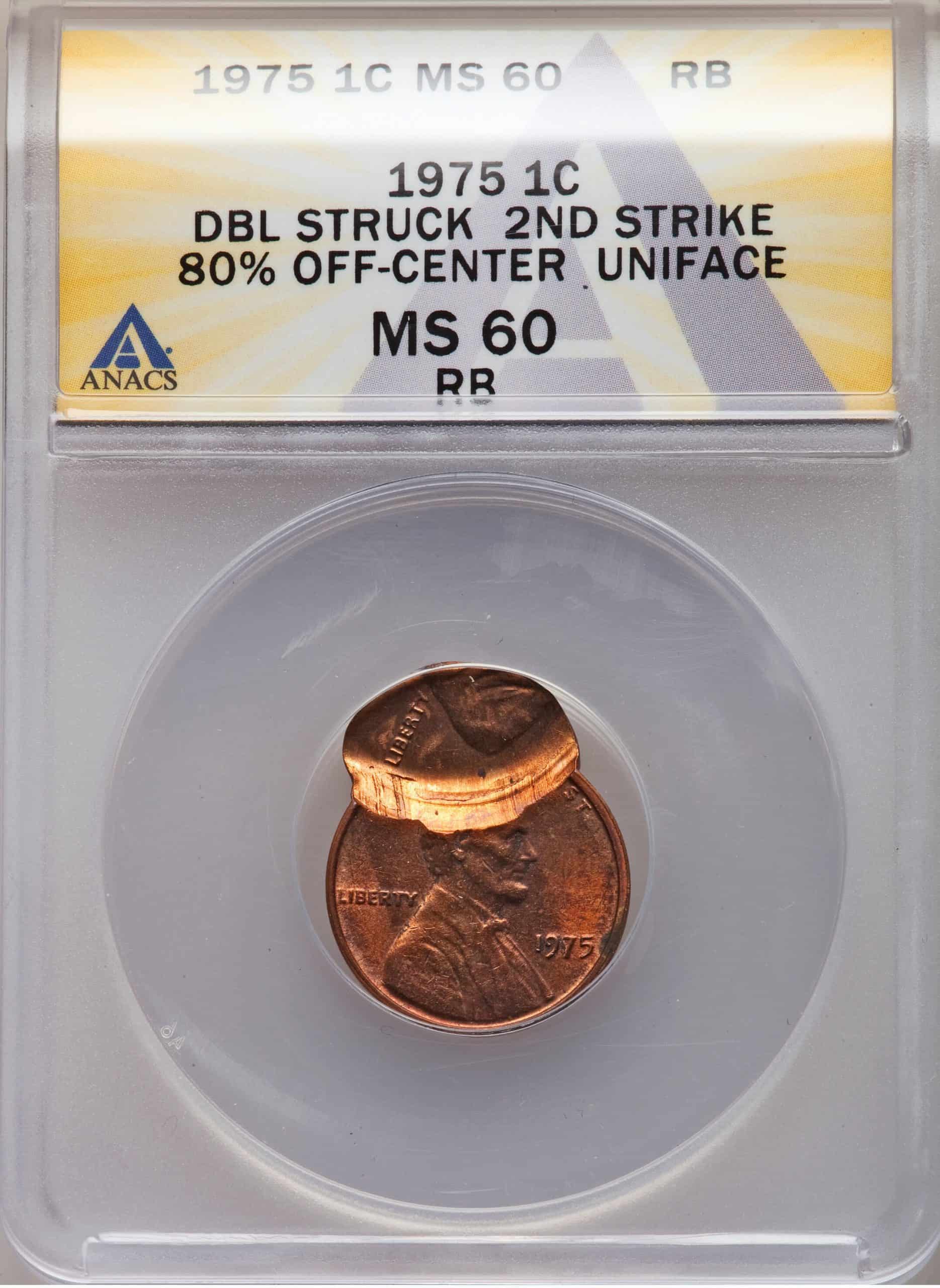
A double strike error means that a coin has been struck twice because it couldn’t get out of the die after the first strike. Sometimes, one of these strikes can be off-center. This usually makes the coin more valuable.
For instance, a red PCGS MS62 1975 D double-struck penny with an 80% off-center second strike can sell for around $60.
4. 1975 Penny Fold-over Strike
A fold-over strike error happens when a die strikes a planchet into a folded position. This usually happens when a planchet enters the striking chamber while in a vertical position. The resulting coin can end up folded in a variety of ways, not just in half.
A red PCGS MS67+ 1975 D penny with this error can sell for over $575.
5. 1975 Penny Struck Off-Center
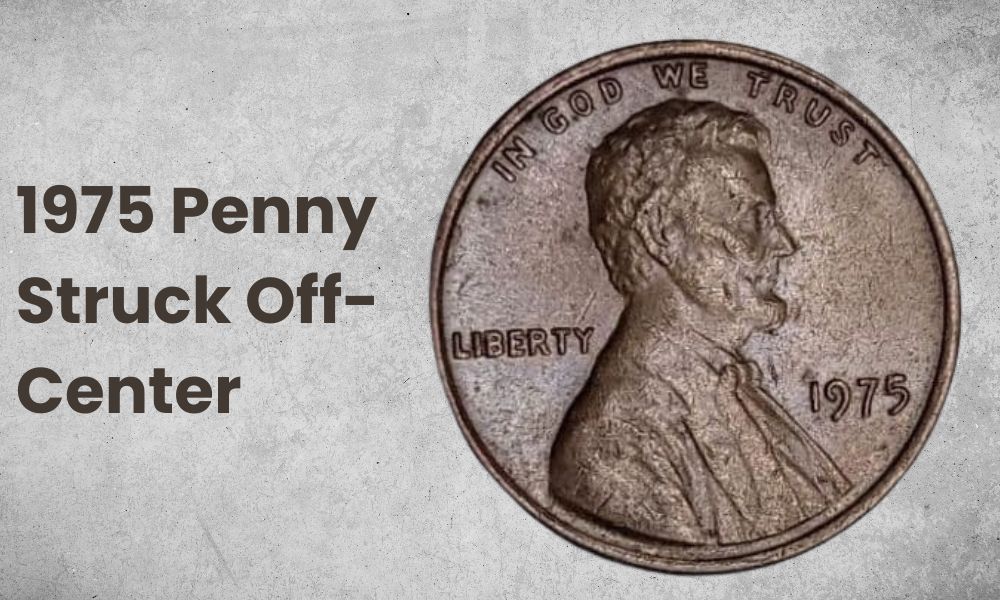
When a coin is partially struck because of improper placement the resulting error is called an off-center strike. This error can add some value to your coin depending on how off-center the strike is.
For instance, a brown NGC MS65 1975 D penny that was struck 5% off-center can sell for $50.
6. 1975 Penny Triple Struck
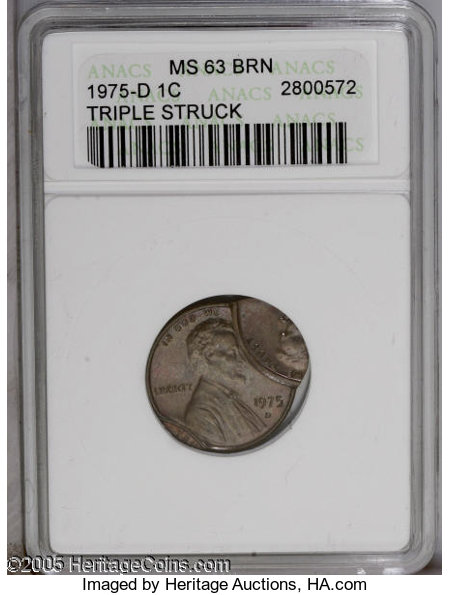
This error is the result of striking a coin 3 times. When it shows up on a brown MS63 1975 D penny, it can sell for over $160.
7. 1975 Penny Struck on Wrong Planchet
This happens when the planchet for a different type of coin is fed to the penny’s striking chamber. A 1975 penny struck on a 10-cent planchet can sell for $200 to $600.
8. 1975 Penny Strikethrough
A strikethrough error occurs when a foreign body gets between a die and the blank being struck. This can cause an indentation or even make the object stick to the coin. When the latter happens, the error is called “ strikethrough and retained”.
Either way, a strikethrough ensures a part of the design doesn’t end up on the coin. A 1975 penny with a strikethrough is more valuable; it can go for around $160.
9. 1975 Penny Double Denomination
A double denomination error occurs when a coin of one denomination is struck over with another denomination. A good example of this is when the mint accidentally strikes a penny on a 10-cent coin.
This creates a coin that has design elements of both denominations. That’s why some people can even refer to this example coin as an 11-cent coin. An NGC MS66 11-cent coin can sell for around $977.
1975 Penny FAQ
How do I know if my penny is worth money?
To know the worth of your coin, first look at its type (proof/regular strike), date, and mint mark. You can then look up the mintage of that coin and research to see how rare it is. After you’ve established its rarity, you can establish how much different grades cost.
Once you have this, check your coin for any errors that can make it more valuable. If at this point you see the possibility of getting a good amount of cash for it, you can send your penny to a professional grading company.
However, you don’t need to get a coin professionally graded to sell it.
Where can I sell pennies worth money?
You can sell your coin on e-commerce platforms like eBay. Alternatively, you can it sell at a local coin shop or an auction house.
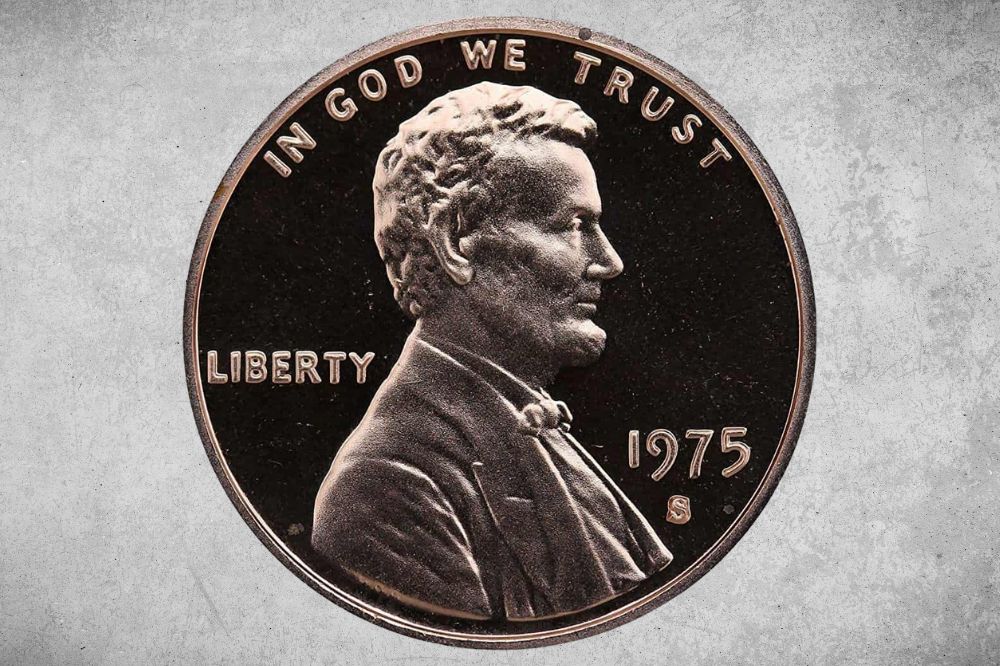
Hello I have 2 pcs of 1 cent penny coins no mintmark year 1975 and 1982 iwant to sell
I have error 1975 penny that shown just part of the word State on the back of it, fair condition.
Ii have a 1975 penny that looks almost brand new. How can that be? And does it have any value? No mint mark.
Hello i have a 1975 no mint mark but it is a broken die error that starts at his hack comes up and over just aling the bottom of the date and if there was a mint mark it mak not of shown up because of the break. Has anyone heard or seen this type of broken die error on a 1975 lincoln cent?